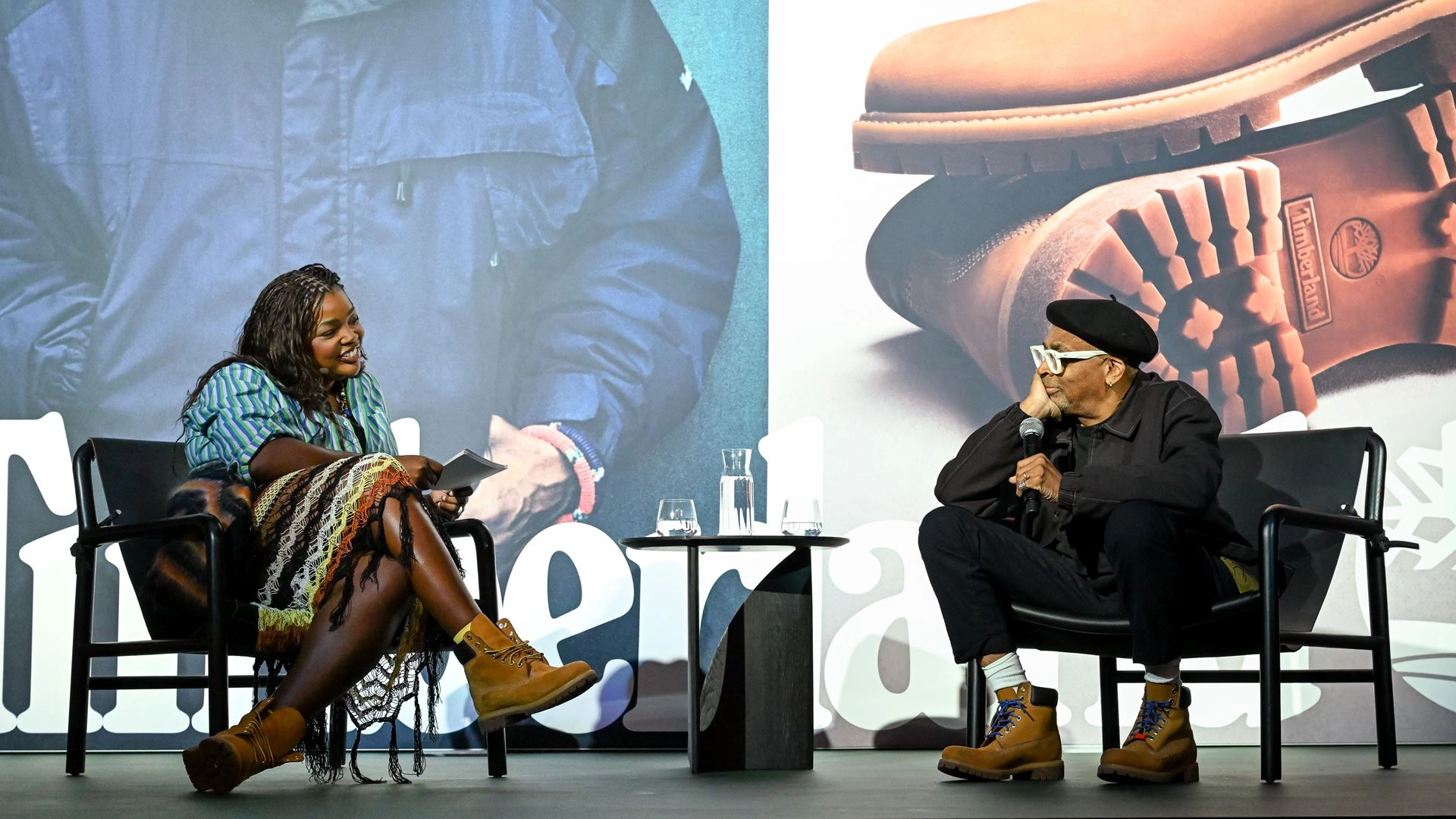“Man, I love being Public Enemy № 1” is not a confession. It is not a boast. It is a battle cry born of surveillance, struggle, and the sharpened clarity of defiance. Public Enemy, led by Chuck D and Flavor Flav, emerged in the late 1980s as the sonic equivalent of an insurrection. No other group in hip-hop history has so consistently occupied the space between threat and prophecy. In 2025, their presence remains visceral. Their catalog—spanning generations, record labels, protests, and presidential regimes—rings louder than the systems that tried to silence it.
Across decades of domestic unrest, technological transformation, and global cultural shifts, Public Enemy has persisted not merely as a band but as a philosophy. This is not revival. It is continuity. Their music was never meant to entertain. It was built to disturb, to decode, to incite critical consciousness. And in a world still locked in cycles of systemic inequality, mass media distortion, and cultural erasure, Public Enemy remains not just relevant—they remain necessary.
Origins in Noise: The Sound of Uprising
When Public Enemy’s debut album Yo! Bum Rush the Show dropped in 1987, its sonic construction already distinguished it from the rest of rap’s emerging mainstream. The Bomb Squad’s production was more collage than beat, a frenetic layering of sirens, funk loops, found audio, scratches, and noise. Every track seemed assembled in chaos and designed to reflect it back onto the listener. This was no dancefloor soundscape. It was a weaponized signal—music as tactical intervention.
The group’s second album, It Takes a Nation of Millions to Hold Us Back (1988), marked a radical escalation. On that record, Chuck D’s baritone command fused militant poetics with deep media criticism. Flavor Flav’s chaotic interjections punctuated the urgency, while the Bomb Squad intensified their aural warfare. The album operated not just as music but as political literature: a densely packed, anti-colonial dispatch delivered through wax and speaker.
Songs like “Bring the Noise,” “Black Steel in the Hour of Chaos,” and “Rebel Without a Pause” refused passivity. They addressed incarceration, propaganda, state violence, and Black identity with unflinching candor. Unlike many of their peers, Public Enemy refused to individualize struggle. They saw it systemically. They named it institutionally. And in doing so, they shaped hip-hop into a broadcast channel for resistance.
Fear of a Black Planet: Public Enemy’s Cultural Apex
By 1990, Fear of a Black Planet cemented the group’s status as more than rappers. They were cultural theorists, movement messengers, and media saboteurs. The album remains one of the most acclaimed in hip-hop history not only for its sound, but for its intellectual ambition.
“Fight the Power,” originally created for Spike Lee’s Do the Right Thing, became both anthem and alarm bell. It channeled the frustrations of the 1980s and forecasted the racial flashpoints of the 1990s. The song’s refusal to apologize, its rejection of sanitized civil rights narratives, and its bold calls to dismantle white supremacist iconography made it a landmark not just in music, but in political art.
What defined Fear of a Black Planet was its theoretical coherence. Chuck D’s lyrics outlined the mechanisms of cultural dominance: the ways in which Blackness is feared, marketed, erased, and re-appropriated. Public Enemy did not appeal to the mainstream. They indicted it. And even when MTV and mainstream radio resisted, the message found its way into schools, onto college campuses, and into the hands of a generation starved for clarity.
The Terrordome as Living Archive
Welcome to the Terrordome was not merely a track; it was an invitation into Public Enemy’s ideological furnace. Inside this metaphoric “Terrordome” lived histories of slavery, incarceration, COINTELPRO surveillance, and media distortion. The song marked a turning point. Its lyrics were confrontational, its production overwhelming. But its real legacy was the conceptualization of Black creative resistance as a literal territory—a zone of intellectual self-defense.
This metaphor of the Terrordome carried forward into their 1991 album Apocalypse 91… The Enemy Strikes Black. Songs like “By the Time I Get to Arizona” demonstrated that Public Enemy was not retreating from politics, but doubling down. The song, responding to Arizona’s refusal to recognize Martin Luther King Jr. Day, took the form of sonic protest and visual provocation. The music video—depicting a fictional revenge fantasy against political figures—sparked controversy but also underscored the group’s commitment to cultural provocation.
Throughout the 1990s, Public Enemy remained prolific, if polarizing. The era of gangsta rap had overtaken much of the industry’s attention, but PE refused to soften their tone or realign their messaging. Albums such as Muse Sick-n-Hour Mess Age and He Got Game may not have scaled the commercial heights of earlier releases, but they expanded the architecture of radical hip-hop into more nuanced terrains—blending jazz, gospel, funk, and spoken word into a continued resistance vocabulary.
The Internet, Surveillance, and PE’s Digital Prophecy
In the 2000s, while many legacy hip-hop acts struggled with relevancy, Public Enemy anticipated the next phase of media warfare. Chuck D was among the first major artists to embrace internet distribution, founding Rapstation and advocating for artist-controlled digital platforms. His early recognition of tech monopolization and media concentration mirrored themes that had appeared in PE’s lyrics since the 1980s.
Public Enemy’s critique of the media was never abstract. It named names, traced financial pathways, and interrogated ownership. Long before Twitter fueled revolutions or Spotify shaped listening habits, Public Enemy’s work insisted on media literacy as a revolutionary act. In Don’t Believe the Hype, that mantra became a mantra for all communities being fed narratives designed to pacify or misinform.
In this sense, Public Enemy not only predicted the current digital age—they prepared listeners for it. The group’s emphasis on skepticism, independent analysis, and cultural autonomy offered a blueprint for surviving misinformation and media manipulation. Their music demanded vigilance, not just volume.
The Aesthetic of Resistance
Public Enemy’s aesthetic has always been as disciplined as it is disruptive. Their stage presence—military-inspired uniforms, S1Ws standing in formation, symbolic clocks worn by Flavor Flav—constructed a visual language of urgency. These were not performances of rebellion. They were rehearsals for revolution.
The group’s aesthetic strategies extended into their album covers, music videos, and concert films. They used visuals to communicate surveillance, imprisonment, and erasure. The target motif—Chuck D in crosshairs—was a calculated act of reclamation. Rather than hide from the gaze of the state or the camera, Public Enemy confronted it head-on.
By 2025, this visual language has proven more than symbolic. In an era defined by biometric surveillance, AI profiling, and data policing, Public Enemy’s early warnings about government overreach, cultural commodification, and algorithmic control feel disturbingly prophetic.
Global Reverberations
While rooted in Black American realities, Public Enemy’s resonance has never been limited by borders. Internationally, their music has served as soundtrack and syllabus for activists from South Africa to Palestine, Brazil to France. The critique of imperialism, economic injustice, and racist media systems found a global audience hungry for articulation and solidarity.
Their collaborations—across cultures and generations—reinforced the notion that hip-hop, when practiced with purpose, can be a planetary language of resistance. Whether appearing at anti-apartheid concerts or solidarity protests, Public Enemy embraced a transnational politics that positioned the struggle of Black Americans within a larger matrix of global oppression.
Public Enemy in 2025: Not a Revival, a Return
In 2025, Public Enemy’s voice remains urgent. The group’s reemergence on stages, in festivals, and across political discourse does not signify a nostalgic revival, but a reminder: this work was never finished. With new global tours under the “Worldwideln25” banner and anniversary editions of their seminal records circulating with newfound resonance, the group stands as one of the few cultural artifacts that have not softened with age.
The issues they championed—police brutality, racial capitalism, incarceration, disinformation, media bias—have not disappeared. They’ve evolved, adapted, and embedded themselves deeper into the infrastructure of daily life. Public Enemy’s continued presence is a refusal to let these issues be normalized.
The role of Chuck D has shifted over time—from firebrand orator to cultural elder, from street poet to institutional critic. Yet the message endures. Flav, often misread as comic relief, embodies the balance of urgency and joy required to sustain struggle. His flamboyance remains subversive. His clock—still worn around his neck—ticks not with irony, but with urgency.
The Endurance of Refusal
To be Public Enemy №1 is to embrace perpetual scrutiny. It is to wear the state’s suspicion as armor. It is to disrupt not with chaos, but with clarity. Public Enemy remains a masterclass in principled noise—sound that doesn’t just challenge the listener, but reconditions them to hear differently.
In 2025, the value of that lesson is immeasurable. Across platforms saturated with content but starved for meaning, Public Enemy offers a counterpoint: the idea that music can be more than consumption. It can be a confrontation. A curriculum. A call.
“Man, I love being Public Enemy №1” is not a romantic sentiment. It is a stance. A dare. A warning. And a vow. One that still echoes through city streets, headphones, vinyl grooves, and protest chants. Because the real Terrordome was never just a metaphor. It was a reality. One that still demands resistance—and still has its soundtrack.
No comments yet.








